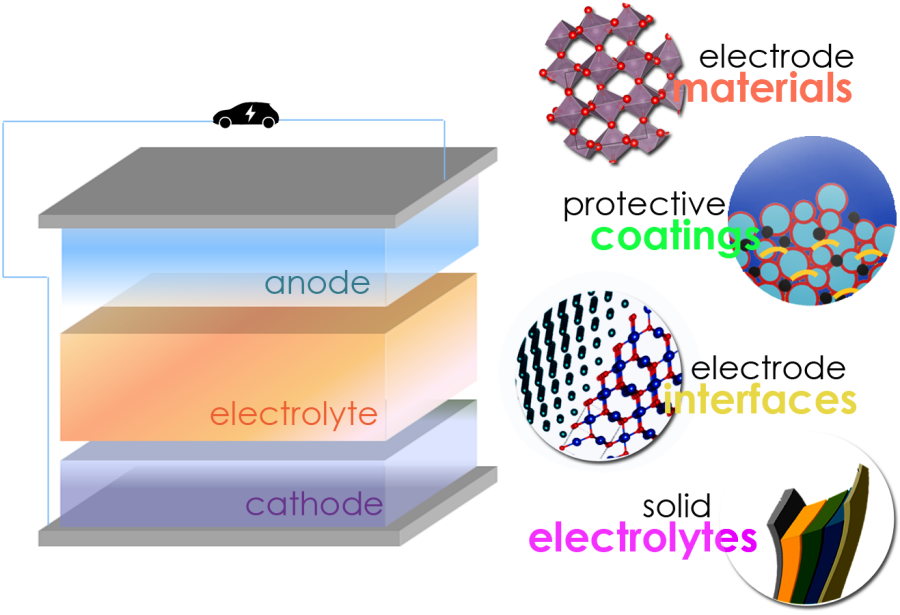Batteries
Transition to renewable energy
Energy storage is more and more becoming an important challenge in our modern day society. Switching to renewable energy sources necessitates the need for high capacity off-grid energy storage; our day-to-day dependence on mobile technology demands light batteries with long cycle lives; and advances in microelectronics (whether or not for biomedical applications) require safe and dependable microbatteries. Lithium-ion batteries (LIBs) form the spearhead of this technology because it is at the high end of the power-/energy-density trade-off, making it the rechargeable battery of choice for future applications.
ALD for improving Li-ion batteries
Atomic layer deposition is an emerging technology in the field of LIBs and has proven to be beneficial in several fields, ranging from protective coatings for conventional powder-based electrodes, to deposition of electrode or electrolyte layers for 3D all-solid-state thin film batteries:
In conventional powder-based Li-ion batteries, ultra-thin ALD coatings have proven to improve the electrode kinetics (batteries with higher power), as well as protect the electrode powders from the electrolyte and decomposition products (HF, SEI formation). These coatings could help pave the way towards higher capacity anode materials on the one hand, and safer, cheaper, high potential cathode materials on the other.
Solid-state Li-ion batteries
In 3D all-solid-state thin film batteries, the need for bulk-material (powder-based) electrodes is circumvented by depositing thin electrode/electrolyte layers on complex 3D structures, raising the capacity per surface area by the internal surface factor of this structure. ALD can deliver conformal coverage on high aspect ratio structures, yielding large capacity increases. An additional effect to these structures is that the slow bulk-diffusion kinetics in solid electrolytes are minimized in this approach, in effect making the batteries much faster to charge/discharge.
Publications:
Dobbelaere, Thomas, et al. “Plasma-enhanced Atomic Layer Deposition of Iron Phosphate as a Positive Electrode for 3D Lithium-ion Microbatteries.” CHEMISTRY OF MATERIALS 28, 10 (2016): 3435–3445. DOI: 10.1021/acs.chemmater.6b00853
Mattelaer, Felix, et al. “The Influence of Ultrathin Amorphous ALD Alumina and Titania on the Rate Capability of Anatase TiO2 and LiMn2O4 Lithium Ion Battery Electrodes.” ADVANCED MATERIALS INTERFACES 4, 13 (2017). DOI: 10.1002/admi.201601237
Zhao, Bo, et al. “Atomic Layer Deposition of ZnO-SnO2 Composite Thin Film : The Influence of Structure, Composition and Crystallinity on Lithium-Ion Battery Performance.” ELECTROCHIMICA ACTA, vol. 320, 2019. DOI: 10.1016/j.electacta.2019.134604
